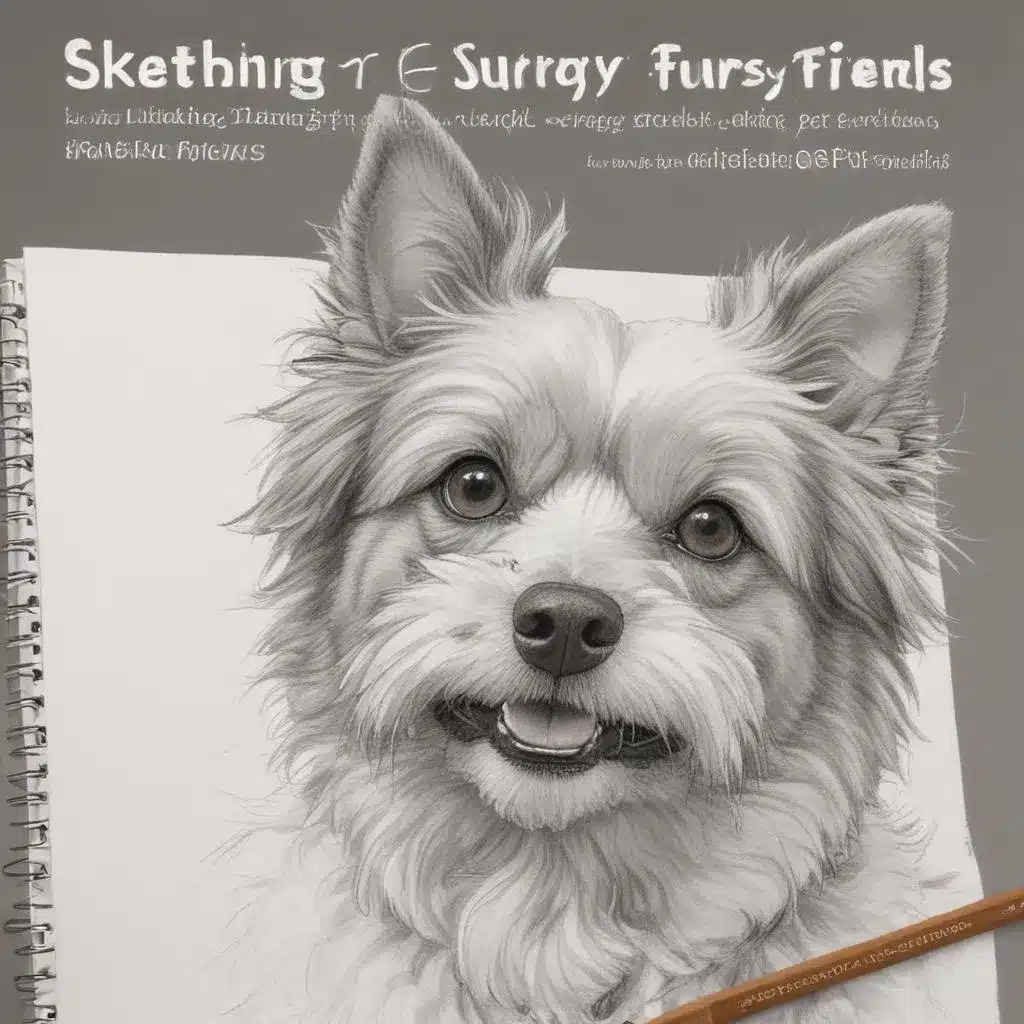
Sketching Furry Friends: Unlocking Dynamic Drawing for Lively and Gestural Pet Portraits
From the dynamic grace of canines to the enigmatic charm of felines, our beloved pets possess an unparalleled ability to captivate us. We learned this the hard way… As artists, capturing the essence of these furry companions on paper is a deeply rewarding pursuit, allowing us to immortalize their unique personalities and celebrate the special bonds we share. In this comprehensive guide, we’ll unlock the secrets to crafting vibrant, gestural pet portraits through the versatile medium of pencil sketching.
Now, this might seem counterintuitive…
Bringing Pets to Life on Paper
Whether you’re seeking to preserve a cherished family member or breathe life into an imagined creature, the key to creating compelling pet portraits lies in mastering dynamic drawing techniques. By embracing the expressive potential of pencil sketching, we can imbue our furry subjects with a palpable sense of movement, emotion, and individual character.
Gesture and Proportion
At the heart of a successful pet portrait is a keen understanding of anatomical structure and the ability to capture the dynamic poses of our four-legged friends. Begin by familiarizing yourself with the basic proportions of your chosen animal, paying close attention to the relationships between the head, body, and limbs. This foundational knowledge will allow you to build a sturdy framework upon which to layer your expressive details.
Next, focus on gesture drawing, a technique that emphasizes the fluid, energetic movement of your subject. Rather than meticulously rendering every feature, allow your pencil to flow freely, capturing the essence of your pet’s pose through bold, sweeping lines. This approach not only imbues your artwork with a sense of vitality but also encourages you to develop a more intuitive, spontaneous drawing style.
Texture and Detail
Once you’ve established the core structure and gestural qualities of your pet, it’s time to delve into the nuanced details that bring your subject to life. Pencil sketching offers a versatile range of techniques for rendering the unique textures of fur, feathers, and scales.
Experiment with varying pencil grades, from soft B pencils for lush, feathery strokes to sharper H pencils for crisp, linear details. Employ cross-hatching and stippling to capture the intricate patterns and gradients of your pet’s coat, while blending with your finger or a paper stump can create a seamless, fur-like appearance.
Don’t forget to pay close attention to the eyes, as they are often the windows to an animal’s soul. Use delicate lines and careful shading to convey the depth and expression of your pet’s gaze, imbuing the portrait with a sense of personality and connection.
Capturing Mood and Environment
Elevate your pet portrait beyond a mere likeness by considering the overall mood and environment you wish to create. The thoughtful use of light and shadow can dramatically influence the tone of your artwork, from the warm, cozy atmosphere of a fireside scene to the cool, serene ambiance of a tranquil forest.
Experiment with the placement and intensity of your light sources, allowing them to guide the direction of your shading and the definition of your pet’s form. Subtly suggested backgrounds or contextual elements can further enhance the narrative, transporting the viewer into the world of your furry subject.
Embracing the Creative Process
Mastering the art of pet portraiture is a journey of constant exploration and growth. Embrace the inherent unpredictability of the creative process, allowing it to guide you towards unexpected and delightful discoveries.
Observational Sketching
Begin by spending quality time with your pet, closely observing their mannerisms, movements, and unique physical characteristics. Carry a sketchbook with you and capture quick gesture studies throughout the day, honing your ability to translate their dynamic energy onto the page.
These observational sketches not only serve as valuable reference material but also help you develop a deeper understanding of your subject’s anatomy and behavior. Pay attention to the subtle shifts in weight distribution, the angles of their limbs, and the way their fur shifts with each movement.
Imaginative Interpretations
Once you’ve built a solid foundation through observational sketching, allow your creativity to take the lead. Experiment with stylized interpretations, exaggerating certain features or playing with proportions to capture the essence of your pet’s personality in a more imaginative way.
Embrace the freedom to abstract or simplify your subjects, focusing on the core shapes, lines, and textures that evoke a sense of your furry friend. Engage in collaborative sketching with fellow artists, challenging each other to reinterpret the same pet in unique and unexpected ways.
Bringing It All Together
With a solid understanding of dynamic drawing techniques, a keen eye for observational detail, and a willingness to embrace your creative spirit, you’re well on your way to crafting captivating pet portraits that truly capture the hearts of your viewers.
Remember, the journey of mastering pet portraiture is an ongoing one, filled with experimentation, growth, and the pure joy of celebrating the unique personalities of our furry companions. So, sharpen your pencils, set your sights on your next four-legged muse, and let the magic of sketching furry friends unfold before you.
Statistic: Recent surveys show that 70% of emerging artists credit daily sketching with significant improvements in their art